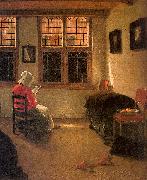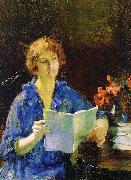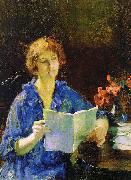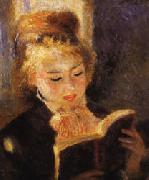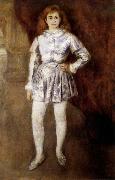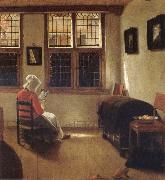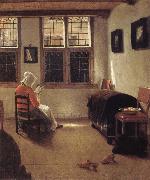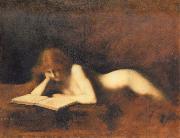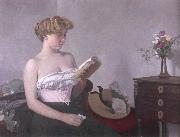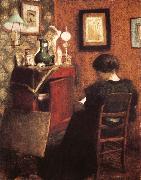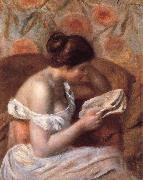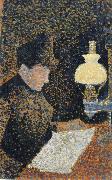Wholesale Oil Painting Reproductions No Minimum and Door to Door! |
|||||||||||
|
|
|||||||||||

|
|||||||||||
|
|
|
||||||||
All Pieter Janssens Oil Paintings |
||||||||
|
|
||||||||
|
|
||||||||
|
Artist Introduction: Dutch Baroque Era Painter, 1623-ca.1682 |
||||||||
|
|
||||||||
|
Woman Reading Painting ID:: 2055 |
Pinakothek, Munich |
|||||||
Height Width |
INS/CM Quality |
|||||||
|
X |
| |||||||
|
|
||||||||
All Francis Coates Jones Oil Paintings |
||||||||
|
|
||||||||
|
|
||||||||
|
Artist Introduction: 1857-1932 |
||||||||
|
|
||||||||
|
|
Woman Reading Painting ID:: 4221 |
1915 |
||||||
Height Width |
INS/CM Quality |
|||||||
|
X |
| |||||||
|
|
||||||||
All Jones, Francis Coates Oil Paintings |
||||||||
|
|
||||||||
|
|
||||||||
|
Artist Introduction: American, 1857-1932 |
||||||||
|
|
||||||||
|
|
Woman Reading Painting ID:: 19108 |
1915, oil on canvas. |
||||||
Height Width |
INS/CM Quality |
|||||||
|
X |
| |||||||
|
|
||||||||
All Auguste renoir Oil Paintings |
||||||||
|
|
||||||||
|
|
||||||||
|
Artist Introduction: |
||||||||
|
|
||||||||
|
|
Woman Reading Painting ID:: 11405 |
1874
1' 6 1/4'' x 1' 3 1/4''(46.5 x 38.5 cm)Bequest of Gustave Caillebotte 1894 |
||||||
Height Width |
INS/CM Quality |
|||||||
|
X |
| |||||||
|
|
||||||||
All Pierre Renoir Oil Paintings |
||||||||
|
|
||||||||
|
|
||||||||
|
Artist Introduction: French Impressionist Painter, 1841-1919
Pierre-Auguste Renoir (February 25, 1841?CDecember 3, 1919) was a French artist who was a leading painter in the development of the Impressionist style. As a celebrator of beauty, and especially feminine sensuality, it has been said that "Renoir is the final representative of a tradition which runs directly from Rubens to Watteau".
Renoir's paintings are notable for their vibrant light and saturated color, most often focusing on people in intimate and candid compositions. The female nude was one of his primary subjects. In characteristic Impressionist style, Renoir suggested the details of a scene through freely brushed touches of color, so that his figures softly fuse with one another and their surroundings.
His initial paintings show the influence of the colorism of Eugene Delacroix and the luminosity of Camille Corot. He also admired the realism of Gustave Courbet and Edouard Manet, and his early work resembles theirs in his use of black as a color. As well, Renoir admired Edgar Degas' sense of movement. Another painter Renoir greatly admired was the 18th century master François Boucher.
A fine example of Renoir's early work, and evidence of the influence of Courbet's realism, is Diana, 1867. Ostensibly a mythological subject, the painting is a naturalistic studio work, the figure carefully observed, solidly modeled, and superimposed upon a contrived landscape. If the work is still a 'student' piece, already Renoir's heightened personal response to female sensuality is present. The model was Lise Tr??hot, then the artist's mistress and inspiration for a number of paintings.
In the late 1860s, through the practice of painting light and water en plein air (in the open air), he and his friend Claude Monet discovered that the color of shadows is not brown or black, but the reflected color of the objects surrounding them. Several pairs of paintings exist in which Renoir and Monet, working side-by-side, depicted the same scenes (La Grenouill??re, 1869).
One of the best known Impressionist works is Renoir's 1876 Dance at Le Moulin de la Galette (Le Bal au Moulin de la Galette). The painting depicts an open-air scene, crowded with people, at a popular dance garden on the Butte Montmartre, close to where he lived.
On the Terrace, oil on canvas, 1881, Art Institute of ChicagoThe works of his early maturity were typically Impressionist snapshots of real life, full of sparkling colour and light. By the mid 1880s, however, he had broken with the movement to apply a more disciplined, formal technique to portraits and figure paintings, particularly of women, such as The Bathers, which was created during 1884-87. It was a trip to Italy in 1881, when he saw works by Raphael and other Renaissance masters, that convinced him that he was on the wrong path, and for the next several years he painted in a more severe style, in an attempt to return to classicism. This is sometimes called his "Ingres period", as he concentrated on his drawing and emphasized the outlines of figures.
After 1890, however, he changed direction again, returning to the use of thinly brushed color which dissolved outlines as in his earlier work. From this period onward he concentrated especially on monumental nudes and domestic scenes, fine examples of which are Girls at the Piano, 1892, and Grandes Baigneuses, 1918-19. The latter painting is the most typical and successful of Renoir's late, abundantly fleshed nudes.
A prolific artist, he made several thousand paintings. The warm sensuality of Renoir's style made his paintings some of the most well-known and frequently-reproduced works in the history of art.. |
||||||||
|
|
||||||||
|
|
Woman Reading Painting ID:: 30080 |
mk64
c.1874
Oil on canvas
45x37cm
Paris,Muse d'Orsay
|
||||||
Height Width |
INS/CM Quality |
|||||||
|
X |
| |||||||
|
|
||||||||
All Pieter Janssens Elinga Oil Paintings |
||||||||
|
|
||||||||
|
|
||||||||
|
Artist Introduction: 1623-1682
Dutch
Pieter Janssens Elinga Locations |
||||||||
|
|
||||||||
|
|
Woman Reading Painting ID:: 41513 |
mk164
1668-70
|
||||||
Height Width |
INS/CM Quality |
|||||||
|
X |
| |||||||
|
|
||||||||
All Pieter Janssens Elinga Oil Paintings |
||||||||
|
|
||||||||
|
|
||||||||
|
Artist Introduction: 1623-1682
Dutch
Pieter Janssens Elinga Locations |
||||||||
|
|
||||||||
|
|
Woman Reading Painting ID:: 41525 |
mk164
1668-70
Alte Pinakothek
Munich
|
||||||
Height Width |
INS/CM Quality |
|||||||
|
X |
| |||||||
|
|
||||||||
All Jean-Jacques Henner Oil Paintings |
||||||||
|
|
||||||||
|
|
||||||||
|
Artist Introduction: 1829-1905
French
Jean Jacques Henner Galleries
French painter. He was born into a peasant family in the Sundgau and received his first artistic training at Altkirch with Charles Goutzwiller (1810-1900) and later in Strasbourg in the studio of Gabriel-Christophe Gu?rin (1790-1846). In 1846 he enrolled at the Ecole des Beaux-Arts in Paris as a pupil of Michel-Martin Drolling and, from 1851, of Francois-Edouard Picot. While a student he was particularly drawn to portraiture, and during his frequent visits to Alsace he made portraits of his family as well as of the notables of the region. He also painted scenes of Alsatian peasant life. |
||||||||
|
|
||||||||
|
|
Woman Reading Painting ID:: 41544 |
mk164
c.1880-90
Musee d-Orsay
Paris
|
||||||
Height Width |
INS/CM Quality |
|||||||
|
X |
| |||||||
|
|
||||||||
All Felix Vallotton Oil Paintings |
||||||||
|
|
||||||||
|
|
||||||||
|
Artist Introduction: 1865-1925was a Swiss painter and printmaker associated with Les Nabis. He was an important figure in the development of the modern woodcut. He was born into a conservative middle class family in Lausanne, and there he attended College Cantonal, graduating with a degree in classical studies in 1882. In that year he moved to Paris to study art under Jules Joseph Lefebvre and Gustave Boulanger at the Academie Julian. He spent many hours in the Louvre, where he greatly admired the works of Holbein, Derer and Ingres; these artists would remain exemplars for Vallotton throughout his life.[1] His earliest paintings, such as the Ingresque Portrait of Monsieur Ursenbach (1885), are firmly rooted in the academic tradition, and his self portrait of 1885 (seen at right) received an honorable mention at the Salon des artistes français in 1886. During the following decade Vallotton painted, wrote art criticism and made a number of prints. In 1891 he executed his first woodcut, a portrait of Paul Verlaine. The many woodcuts he produced during the 1890s were widely disseminated in periodicals and books in Europe as well as in the United States, and were recognized as radically innovative in printmaking. They established Vallotton as a leader in the revival of true woodcut as an artistic medium; in the western world, the relief print, in the form of commercial wood engraving, had long been mainly utilized unimaginatively as a medium for the reproduction of drawn or painted images and, latterly, photographs. Vallotton's starkly reductive woodcut style features large masses of undifferentiated black and areas of unmodulated white. While emphasizing outline and flat patterns, Vallotton generally made no use of the gradations and modeling traditionally produced by hatching. The influences of post-Impressionism, symbolism and the Japanese woodcut are apparent; a large exhibition of ukiyo-e prints had been presented at the École des Beaux-Arts in 1890, and Vallotton, like many artists of his era an enthusiast of Japonism, collected these prints. He depicted street crowds and demonstrations including several scenes of police attacking anarchists bathing women, portrait heads, and other subjects which he treated with a sardonic humor. His graphic art reached its highest development in Intimit's (Intimacies), a series of ten interiors published in 1898 by the Revue Blanche, which deal with tension between men and women. Vallotton's prints have been suggested as a significant influence on the graphic art of Edvard Munch, Aubrey Beardsley, and Ernst Ludwig Kirchner .By 1892 he was affiliated with Les Nabis, a group of young artists that included Pierre Bonnard, Ker-Xavier Roussel, Maurice Denis, and Edouard Vuillard, with whom Vallotton was to form a lifelong friendship. During the 1890s, when Vallotton was closely allied with the avant-garde, his paintings reflected the style of his woodcuts, with flat areas of color, hard edges, and simplification of detail. |
||||||||
|
|
||||||||
|
|
Woman Reading Painting ID:: 45745 |
mk185
1906
Oil on canvas
90x116cm
|
||||||
Height Width |
INS/CM Quality |
|||||||
|
X |
| |||||||
|
|
||||||||
All Henri Matisse Oil Paintings |
||||||||
|
|
||||||||
|
|
||||||||
|
Artist Introduction: French Fauvist Painter and Sculptor, 1869-1954
Henri Matisse is considered the most important French artist of the 20th century and, along with Pablo Picasso, one of the most influential modernist painters of the last century. Matisse began studying drawing and painting in the 1890s. A student of the masters of Post-Impressionism, Matisse later made a reputation for himself as the leader of a group of painters known as Les Fauves. An ironic label given to them by a critic, the name reflected Matisse's aggressive strokes and bold use of primary colors. In 1905 Matisse gained sudden fame with three paintings, including Woman with the Hat, purchased by the wealthy American ex-patriot Gertrude Stein. Beyond painting, he worked with lithographs and sculpture, and during World War II he did a series of book designs. Later in his career he experimented with paper cutouts and designed decorations for the Dominican chapel in Vence, France. Along with Picasso, |
||||||||
|
|
||||||||
|
|
Woman reading Painting ID:: 57939 |
mk260 1895 Oil on wood years 61.5 x 48 cm |
||||||
Height Width |
INS/CM Quality |
|||||||
|
X |
| |||||||
|
|
||||||||
All Pierre Auguste Renoir Oil Paintings |
||||||||
|
|
||||||||
|
|
||||||||
|
Artist Introduction: 1848-94
|
||||||||
|
|
||||||||
|
|
woman reading Painting ID:: 66424 |
mk289 1891 oil on canvas 42.2x34.3cm museum of fine artersburg florida |
||||||
Height Width |
INS/CM Quality |
|||||||
|
X |
| |||||||
|
|
||||||||
All Paul Signac Oil Paintings |
||||||||
|
|
||||||||
|
|
||||||||
|
Artist Introduction: 1863-1935
French
Paul Signac Galleries
Paul Victor Jules Signac was born in Paris on November 11, 1863. He followed a course of training in architecture before deciding at the age of 18 to pursue a career as a painter. He sailed around the coasts of Europe, painting the landscapes he encountered. He also painted scenes of cities in France in his later years.
In 1884 he met Claude Monet and Georges Seurat. He was struck by the systematic working methods of Seurat and by his theory of colours and became Seurat's faithful supporter. Under his influence he abandoned the short brushstrokes of impressionism to experiment with scientifically juxtaposed small dots of pure colour, intended to combine and blend not on the canvas but in the viewer's eye, the defining feature of pointillism.
Many of Signac's paintings are of the French coast. He left the capital each summer, to stay in the south of France in the village of Collioure or at St. Tropez, where he bought a house and invited his friends. In March 1889, he visited Vincent van Gogh at Arles. The next year he made a short trip to Italy, seeing Genoa, Florence, and Naples.
The Port of Saint-Tropez, oil on canvas, 1901Signac loved sailing and began to travel in 1892, sailing a small boat to almost all the ports of France, to Holland, and around the Mediterranean as far as Constantinople, basing his boat at St. Tropez, which he "discovered". From his various ports of call, Signac brought back vibrant, colourful watercolors, sketched rapidly from nature. From these sketches, he painted large studio canvases that are carefully worked out in small, mosaic-like squares of color, quite different from the tiny, variegated dots previously used by Seurat.
Signac himself experimented with various media. As well as oil paintings and watercolours he made etchings, lithographs, and many pen-and-ink sketches composed of small, laborious dots. The neo-impressionists influenced the next generation: Signac inspired Henri Matisse and Andr?? Derain in particular, thus playing a decisive role in the evolution of Fauvism.
As president of the Societe des Artistes Ind??pendants from 1908 until his death, Signac encouraged younger artists (he was the first to buy a painting by Matisse) by exhibiting the controversial works of the Fauves and the Cubists. |
||||||||
|
|
||||||||
|
|
woman reading Painting ID:: 71223 |
1887 9x5in musee d orsay paris gift of ginette signac1979 |
||||||
Height Width |
INS/CM Quality |
|||||||
|
X |
| |||||||
|
|
||||||||
|
Prev Next
|
||||||||
|
|
||||||||
|
Related Paintings to Paul Signac :. |
||||||||
|
|
||||||||
|
CONTACT US |
